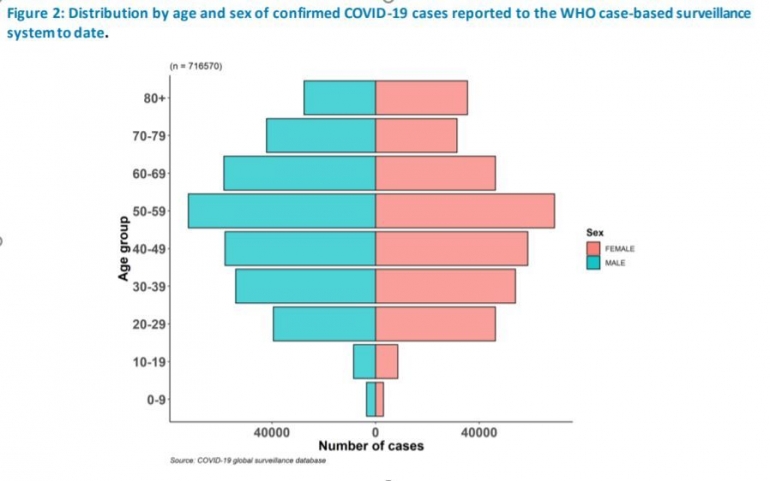However, if the number of deaths of 6,839 were seen from the sex, the death of male patients reached 62% and 38% of women. The chart below shows the percentage of deaths of male patients of COVID-19 in various countries which is always greater than female patients, although the percentage of cases in men in some countries is lower than women. https://globalhealth5050.org/covid19/#1586248980572-3839d9fe-3b88
Death of a Male COVID-19 Patient. So what causes male patients to have a greater fatal risk, data from China say that large male patient deaths is due to most men in China, which based on national statistics are smokers (50% of men vs. 5% of women, this is because in Chinese culture, there is a negative stigma against women who smoke).
As well as Italy, where male smokers are 25% more than women. However, this trend is not found in Spain, which according to national statistics the number of male and female smokers are only slightly different. Furthermore, for patients who are fatal in China, although further study is needed, the current conclusion is that the possibility of active smokers entering ICU (and requiring ventilators) and ending in death is 2.4 times greater in non-smokers. Source.

Role of the ACE2 Enzyme. Apart from smoking habits and sufferers with other illnesses, hormonal aspects are beginning to be investigated as factors that cause higher mortality of male patients. The dominant testosterone hormone in men is known as a hormone that can decrease the body's immune system, and it is inconsistent, where when antigens enter, there are immune cells that show an active response, some are response slow and weak, some are even not concerned about the antigens.
Conversely, estrogen in women is known as a hormone that increases a woman's immunity. When the SARS-CoV-2 virus enters through the lungs eventually reaching the alveoli (the smallest vessel in the lungs where it exchanges oxygen with carbon dioxide), with intermediate enzyme ACE2 the virus lands perfectly on the target cells, i.e. the epithelial cells in the alveoli.
Furthermore, the RNA released by the virus, helped by Trans-membrane protease serine 2 enzyme (TMPRSS2) will start hijacking the cell's work by asking the body's cells to replicate the virus.
Against this incoming antigen, the immune cell responds by releasing inflammatory cytokines (pro-inflammatory cytokines). this is to recruit white blood cells (B-Cells, T-Cells, Macrophages and Monocytes) to the source of infection to get rid of the antigens (Viruses) through various mechanisms, such as monocytes that look like kidney beans are vacuum cleaner that will eat viruses , bacteria, protozoa and others, and when these dead cells die, they will be cleansed by the body's lymphatic system.
Cytokine Storm. The release of pro-inflammatory cytokines is the body's natural response to deal with the influx of antigens such as viruses, but there are times when the body responds excessively, which causes what we know as the Cytokine Storm.
During the cytokine storm, white blood cells that are recruited or mobilized become too many and out of control by attacking and destroying healthy cells that should be protected. This cytokine storm phenomenon is one that has been widely studied since 2005 when bird flu occurred. The high mortality rate in bird flu patients is directly related to the uncontrolled cells response in the release of cytokines.
Like avian influenza caused by the H5N1 virus, SARS, MERS, SARS-CoV-2 are from the beta-corona group, in many cases the fatality of COVID-19 patients end with one or multi - organ failure resulting from cytokine storm. In the case of acute lung organ failure (Acute respiratory distress syndrome), the lungs are filled with fluid or pus due to too many dead white blood cells.











